Case Study
From Quiet Diary to Fully Booked: How One London Psychotherapy Clinic Transformed Its Enquiry Flow
When you’re a therapist, your impact is measured in conversations, not impressions. But conversations don’t happen without enquiries — and enquiries don’t happen without a strategy.
“For the first time, our biggest challenge wasn’t finding clients. It was finding more therapists..”
– Clinic Director, Dr. Caldwell
The Client
The client is a multi-practitioner psychotherapy clinic in London, supporting both busy professionals and couples navigating modern life’s pressures.
Despite an excellent clinical reputation, the clinic faced a blunt commercial truth: the phones weren’t ringing enough.
They relied almost entirely on organic referrals and a static website. No clear marketing funnel. No follow-up structure. No consistent traffic source.
The Challenge
The London therapy market was shifting fast. As mental health conversations became more mainstream post-pandemic, search competition spiked — new clinics were investing heavily in Google Ads and SEO. This once-quiet clinic suddenly found itself drowned out in a noisier market, with enquiry numbers slipping just as demand was peaking.
The clinic was running on hope rather than a marketing engine. They had:
- Low search visibility for critical therapy keywords in London.
- A generic website with no compelling call-to-action.
- No landing pages to guide potential clients to enquire.
- A Google Ads account that had been “set up once” and then left to quietly bleed budget.
- No email nurture sequences to convert warm visitors into booked sessions.
The result? Patchy enquiry volume. Full diaries some months, crickets the next.
“We knew we were helping people change their lives — but we also knew too few people were finding us.”
Clinic Director
That moment made it clear they needed a marketing partner to sharpen their brand, amplify their presence, and turn operational excellence into market dominance.
Client information
2012
Year founded
16
Registered Practitioners
1
Central London Location
Our Approach
Before touching a single ad or headline, we stepped back to diagnose the real problem. A scattergun approach might have produced a temporary spike in clicks — but without understanding what was broken, it would have been like pouring water into a leaking bucket.
We audited every step of the enquiry journey — from search visibility to on-page experience and follow-up — to separate symptoms from root causes. That clarity meant every tactic that followed had a job to do, not just a box to tick.
Diagnosis
Finding the Leaks Before Turning on the Tap
Most marketing failures don’t come from a lack of activity — they come from doing the wrong things faster. So before touching a single campaign, we ran a full diagnostic sweep to get a clear, evidence-based view of what was really holding this clinic back.
We started with traffic and conversion mapping, tracking every step from search query to enquiry. That exposed where potential clients were dropping off — but not why.
We then conducted a website usability and funnel audit, simulating the experience of a first-time visitor looking for help. We tested device performance, CTA clarity, load speed, and the ease of making contact.
Next came a Google Ads deep dive: dissecting keyword match types, ad strength, geo-targeting, extension use, and negative keyword lists. We wanted to see not just what was being spent, but how effectively each pound was working.
Finally, we aligned these findings with market context — rising CPCs, more aggressive competitors, and shifting search intent post-pandemic. The result was a clear, data-backed picture of the clinic’s weak points.
Our audit uncovered several red flags:
- Campaigns used broad, vague keywords like “therapy London” with no geo-targeting or audience segmentation.
- Ads lacked callouts, sitelinks, and structured snippets, killing ad strength and CTR.
- Conversions weren’t tracked accurately, making optimisation impossible.
- There was no follow-up mechanism for visitors who didn’t convert on first contact.
We didn’t just see gaps. We saw opportunities.
Strategy
With clear insights from the diagnosis phase, we defined a focused strategy designed to connect with the most valuable audience segments and position the clinic with clarity and strength.
1. Targeting: Narrow to Win Bigger
Rather than chasing broad, low-quality traffic, we focused on high-intent searchers in Central London.
- Geographically, this meant tightening radius targeting around areas where professionals and couples are most likely to seek therapy (e.g. Holborn, City, Westminster).
- Behaviourally, we honed in on search terms that signal intent to book — not just browse — such as “book couples therapy London” or “CBT therapist near me”.

2. Positioning: From ‘Therapy Option’ to ‘Trusted Choice’
Most therapy websites look the same — soft colours, vague promises, and a long wait for someone to call back.
Our positioning strategy was different:
- Clear, professional messaging that speaks to outcomes, not vague reassurance.
- Proof of credibility through therapist bios, specialisms, and clinic stats.
- A frictionless path from “I might need help” to “I’ve booked my session.”
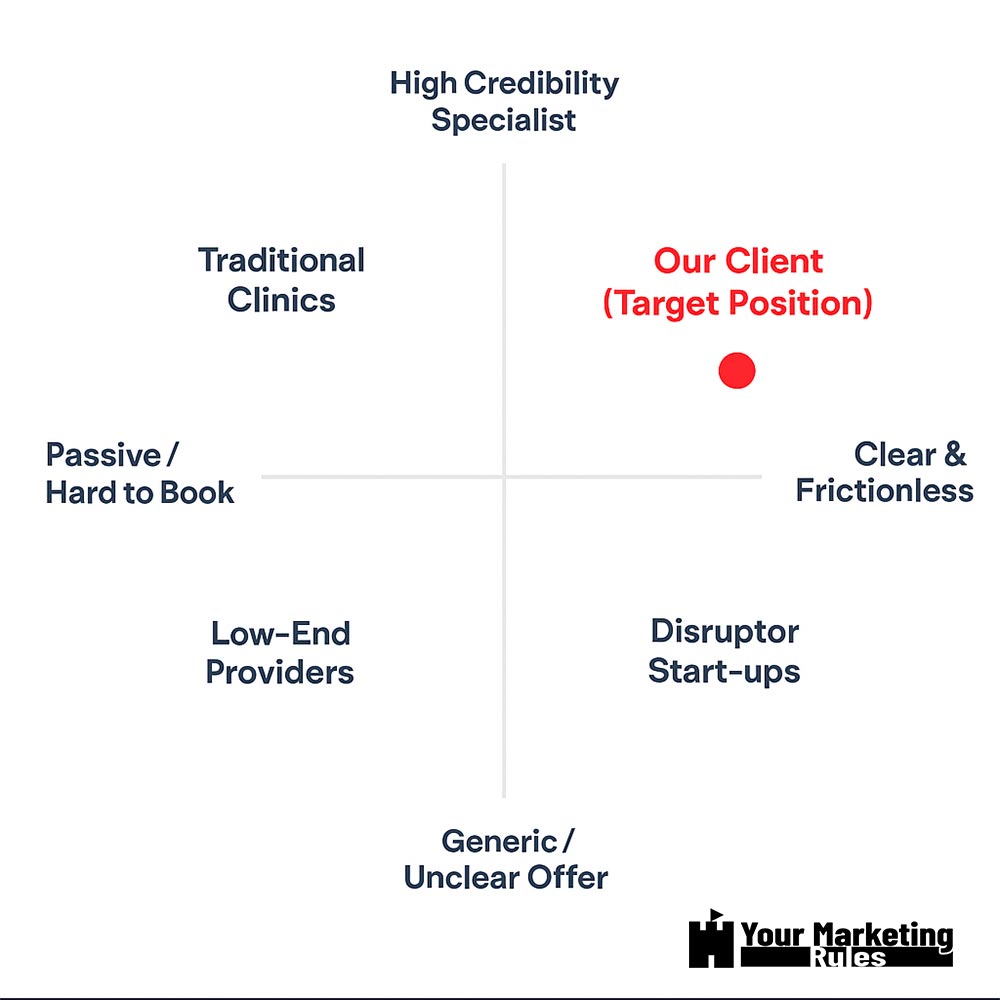
3. Funnel Focus: Nail the Middle First
The biggest opportunity wasn’t at the top of the funnel — awareness was already there. The leak was in the middle of the funnel: people who found the clinic but didn’t enquire.
- Landing pages were redesigned to convert warm traffic.
- Google Ads were rebuilt to target bottom and mid-funnel intent.
- Email sequences were introduced to nudge hesitant visitors into taking action.
In other words: we stopped chasing more noise at the top and built a system to turn the traffic they already had into booked sessions.
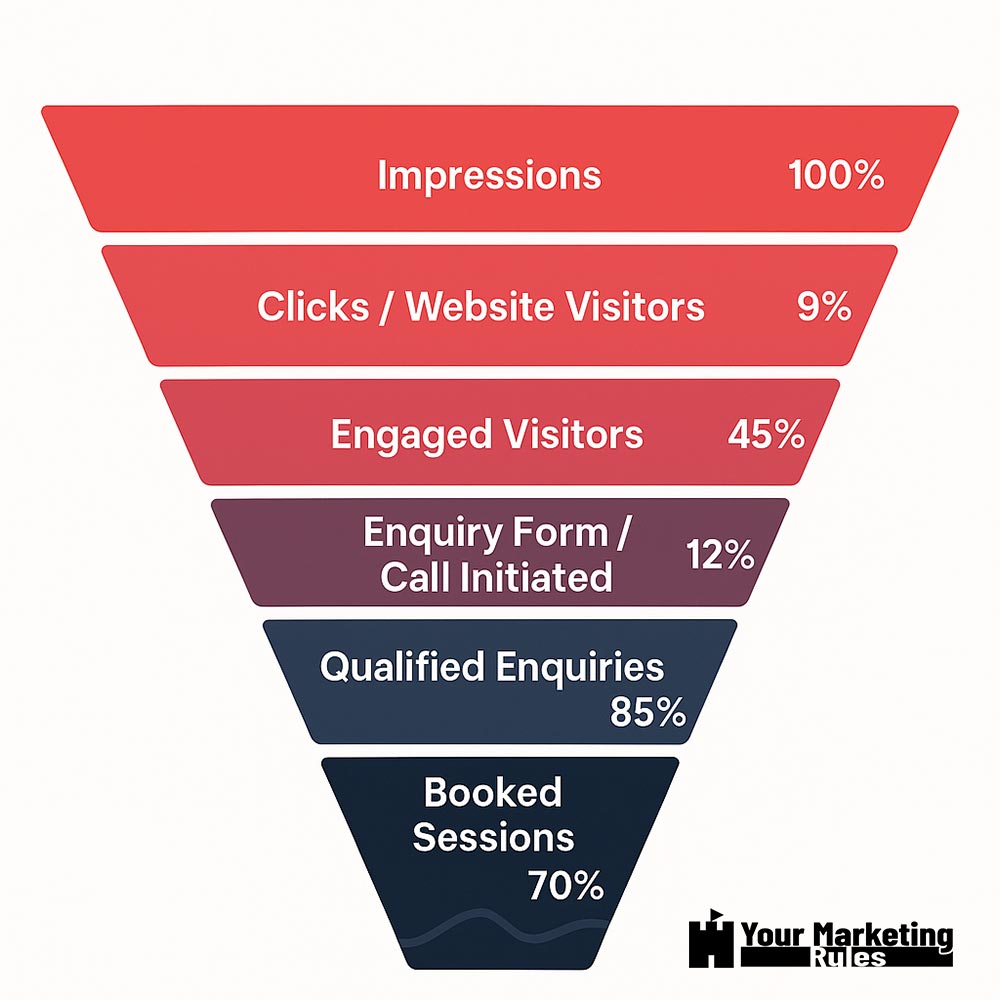
4. Objectives: Commercial Clarity First
We set hard, measurable goals — not just feel-good metrics:
- Increase qualified enquiries by 200% within 12 months.
- Reduce cost per enquiry to below £50.
- Consistently fill practitioner diaries to at least 85%.
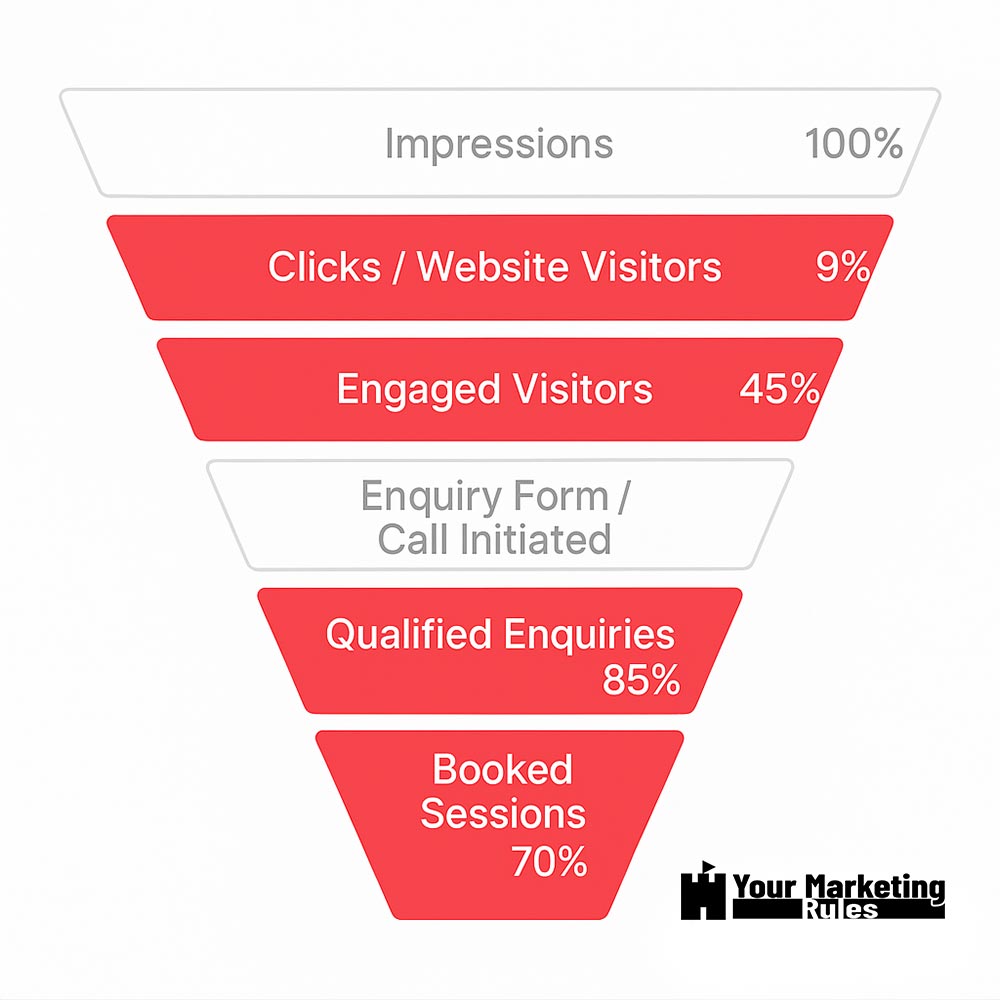
Tactics
Strategy gave us the blueprint; tactics are how we make it real. With clear targeting, sharp positioning, and funnel priorities set, the next step was to translate that direction into precise actions. Every move — from keyword selection to landing page design and email sequencing — was chosen to serve those strategic objectives, not just to “do more marketing.” This is where the plan turns into performance.
SEO
- Keyword research focused on high-intent terms (e.g. “couples therapy London,” “anxiety counselling near me”).
- Site structure and content were aligned with these queries to boost organic visibility.
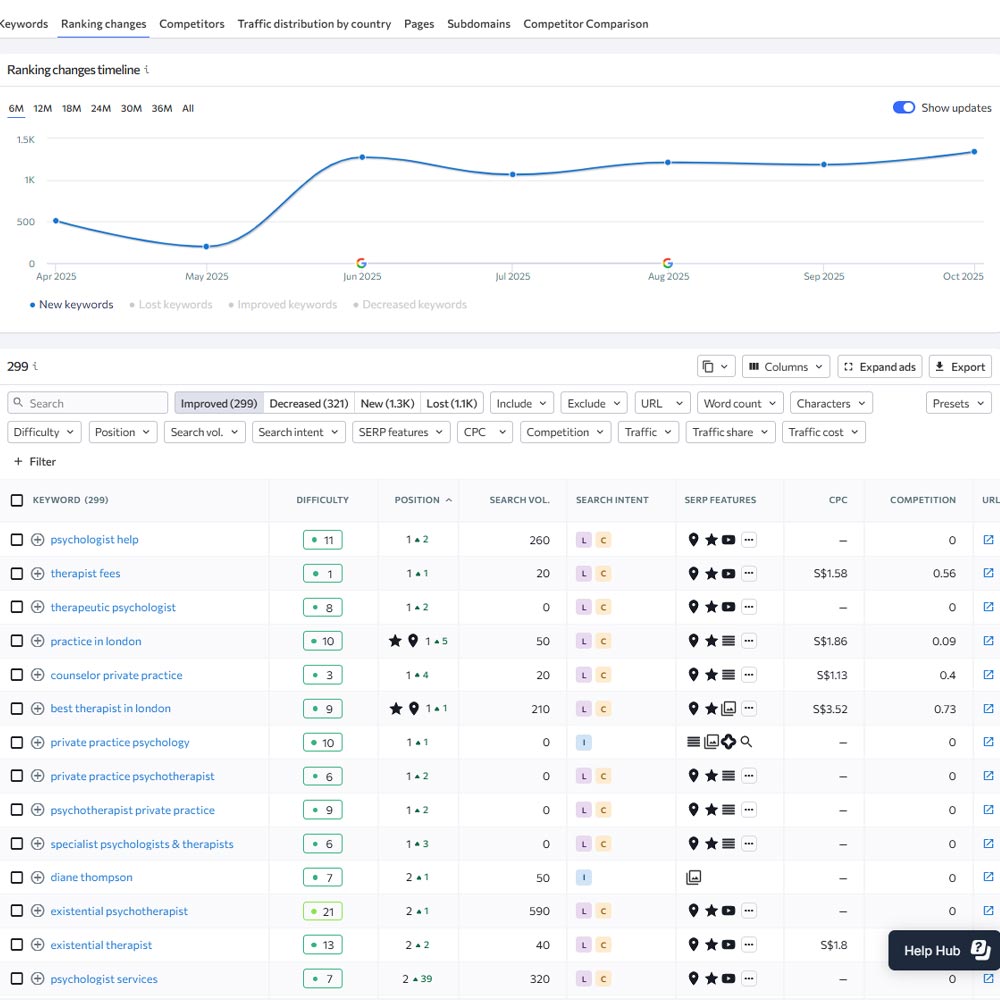
Conversion Tracking & Data Infrastructure
- Implemented GA4 + Tag Manager event tracking to attribute every lead properly.
- Tracked calls, forms, and email clicks.
Landing Pages That Convert
- Built targeted landing pages for key services.
- Clear, reassuring messaging. Prominent CTAs. Clickable phone numbers.
- Mobile-first design for a London audience always on the go.
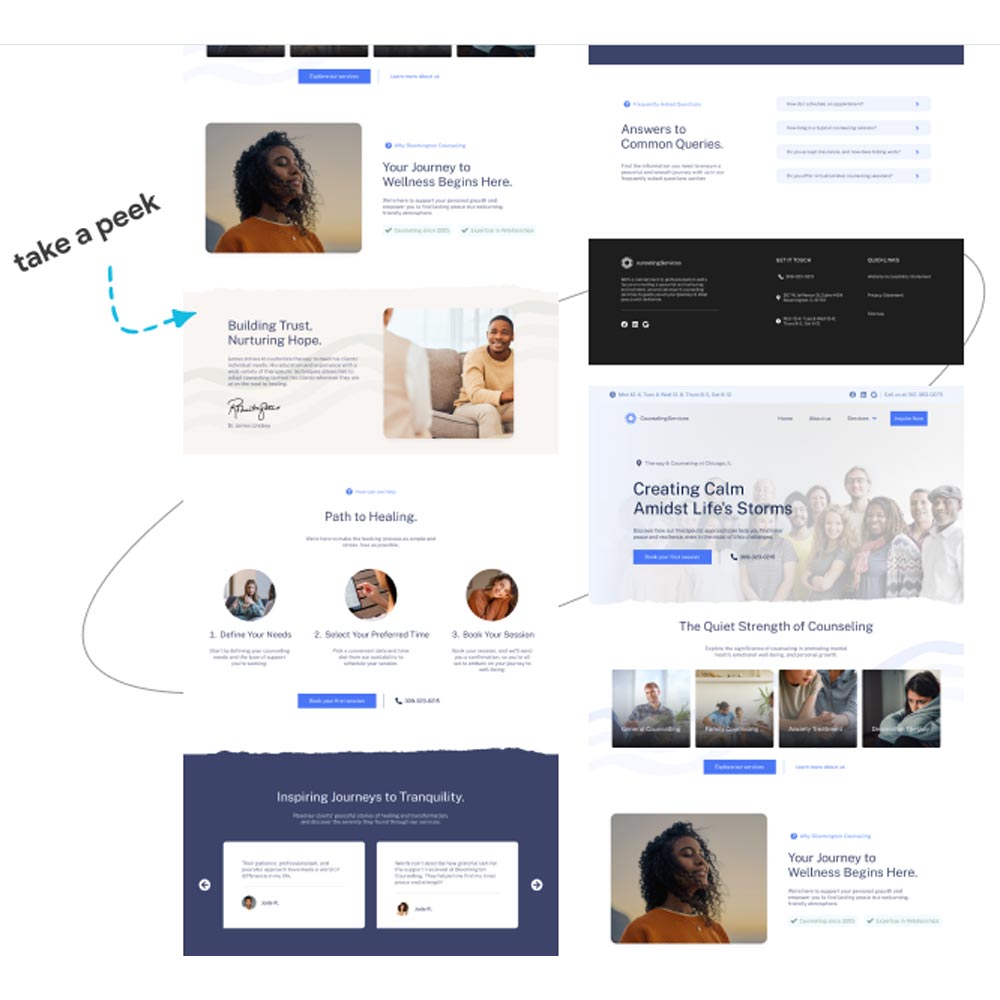
Iterative Testing
- Weekly review cycles. Ad creative and copy were adjusted based on live performance.
- Headlines that led with outcomes, not just credentials.
Google Ads Rebuild
- Tight geographic targeting to focus on central London.
- Shifted from broad match to exact and phrase match keywords.
- Negative keyword lists to eliminate waste.
- Full ad extensions suite added (callouts, sitelinks, structured snippets).
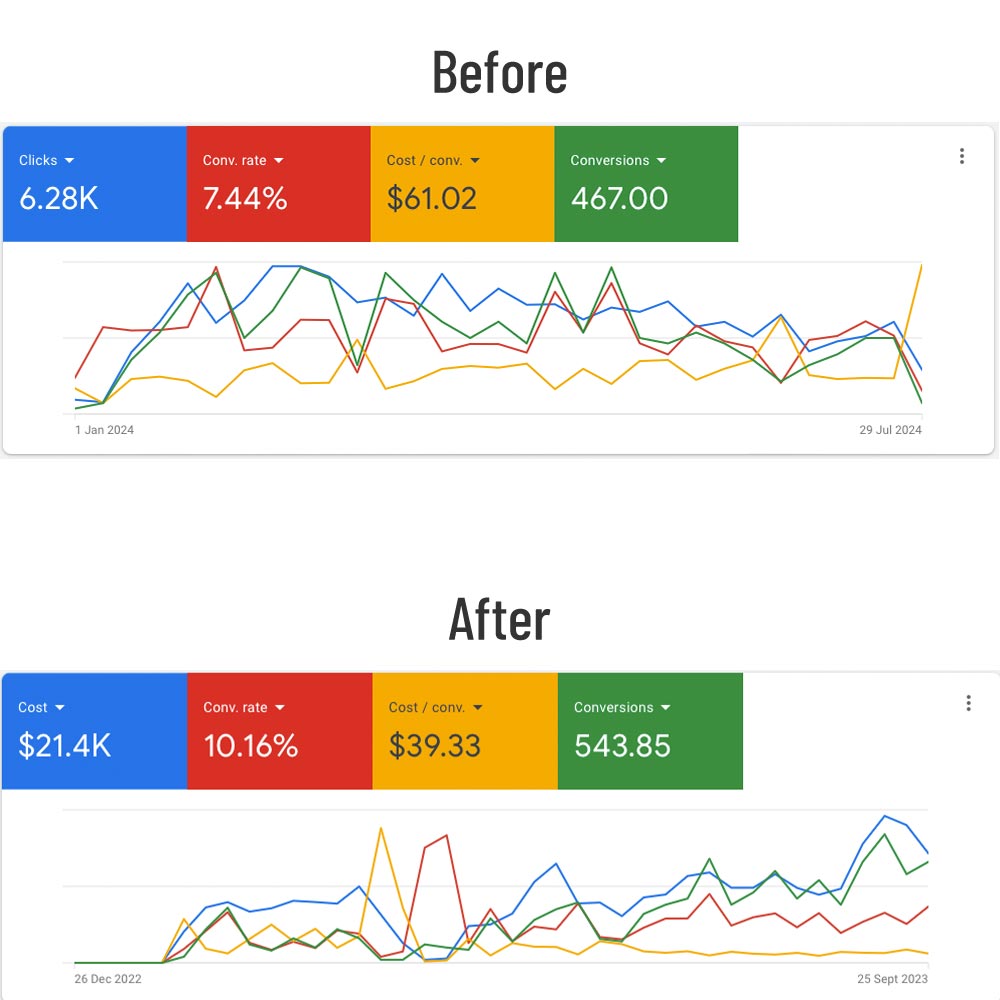
Email Follow-Up
- Introduced an automated email sequence to support hesitant enquirers and increase booking rates.
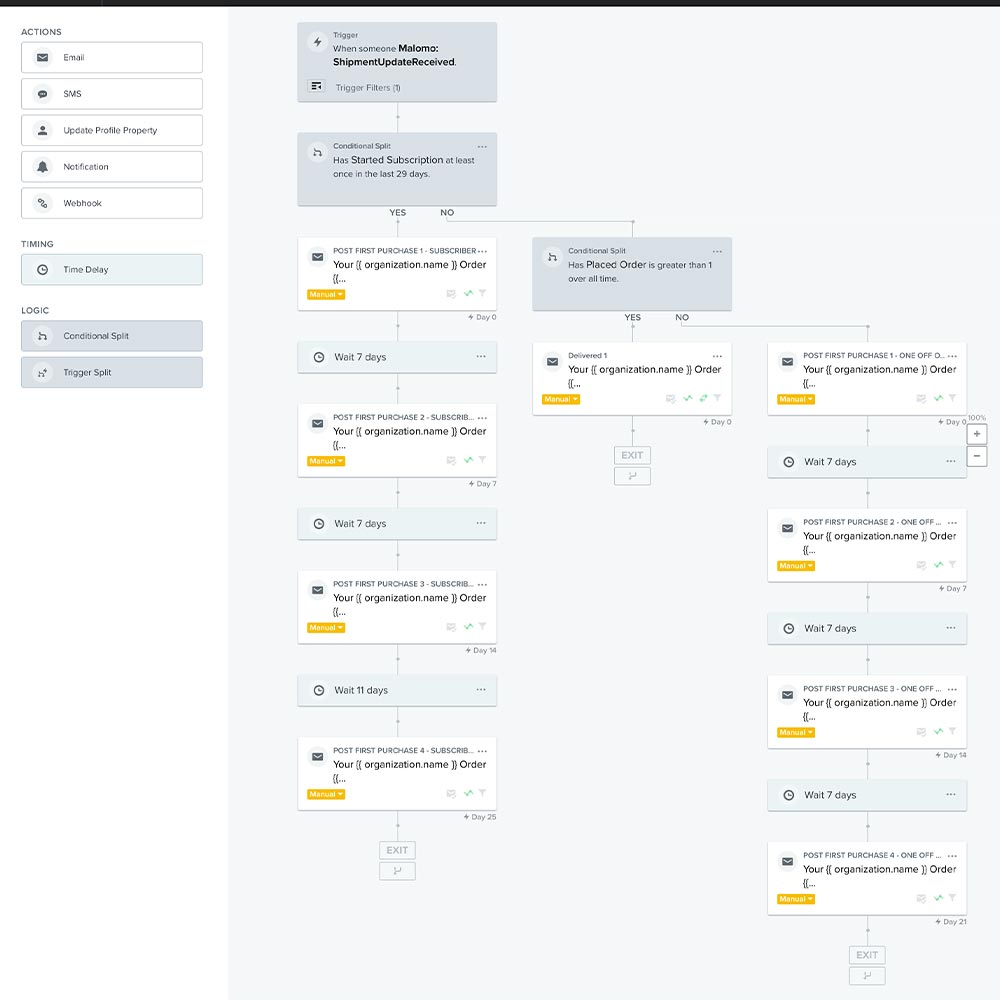
“For the first time, our biggest challenge wasn’t finding clients. It was finding more therapists..”
– Senior Therapist.



The Results
Over the first 12 months, the clinic experienced:
- +312% increase in qualified enquiries
- Click-through rate up from 3.1% to 9.4%
- Cost per enquiry down from £92 to £48
- Landing page conversion rate doubled from 6% to 12.4%
- Practitioners went from 60% average diary fill to consistently 90%+
“The best part is we didn’t have to become marketers. Your Marketing Rules built a system that just works in the background. We focus on therapy, and the calls keep coming in.”
– Senior Therapist.

